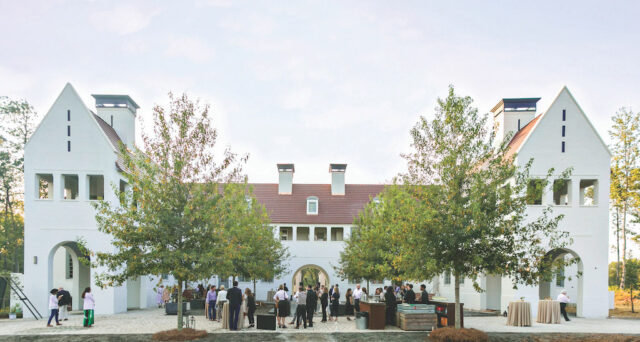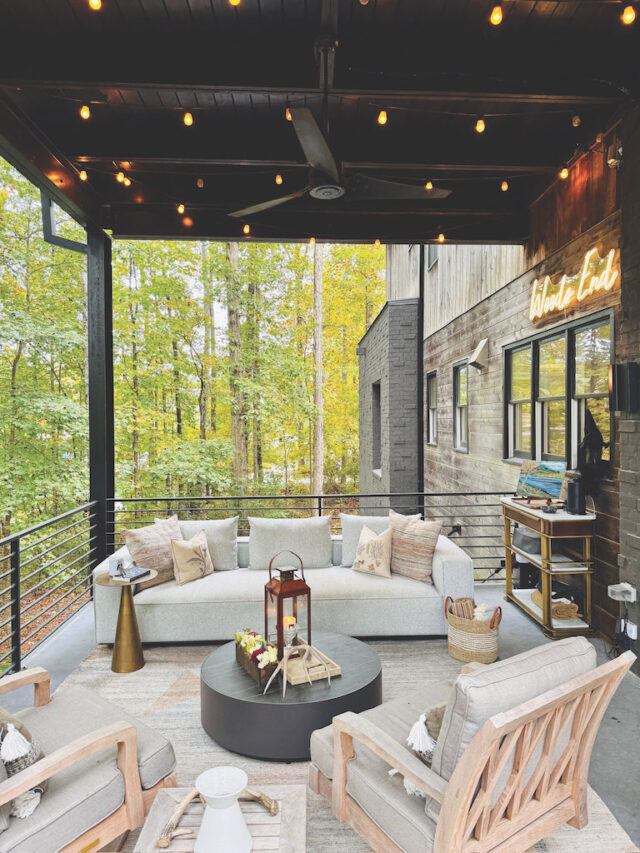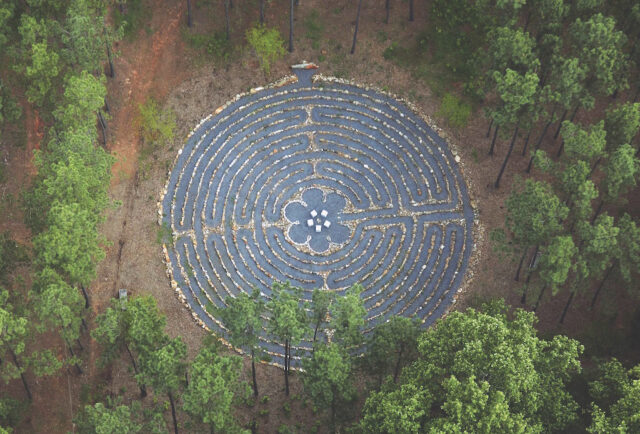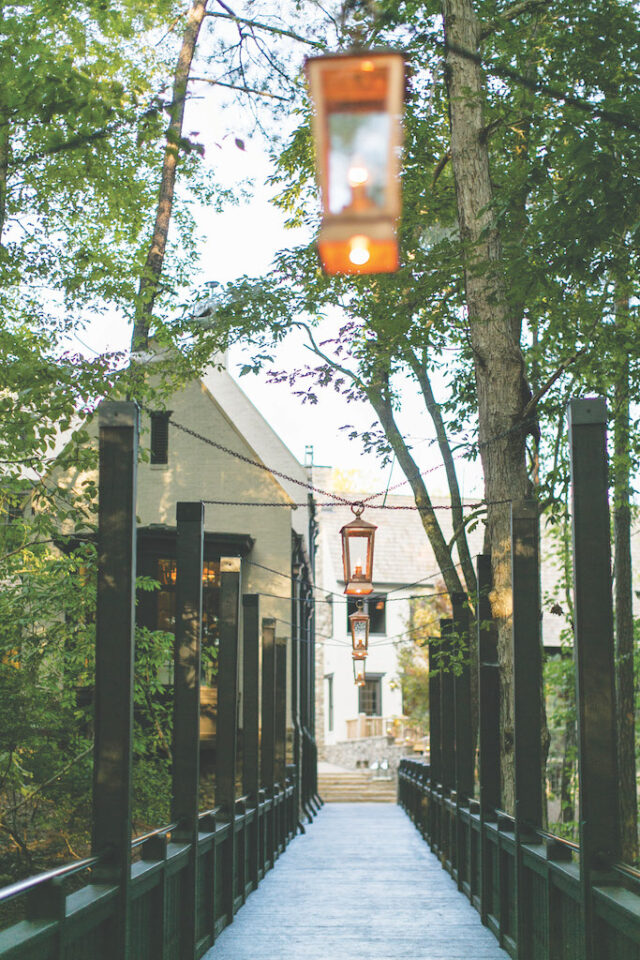
By Amely Greeven
If you were to design an antidote to anonymous urban living, or sterile and sprawling suburbia, what might you include? A green village comprising curving, leafy streets that encourage walking and biking. Attractive homes with front porches that invite neighbors to stop by, Centralized spots to grab mail and a coffee, and bump into that friend-of-a-friend. A weekly farmers market, and even a village organic farm for your CSA box.
Perhaps you’d add a top-notch school, restaurants with local farm-to-table food and great wine, and while you’re at it, a roster of art and culture offerings to make magic on warm summer nights. These lifestyle pleasures are reality for residents of Serenbe, a “biophilic wellness community” located in verdant Chattahoochee Hills, roughly half an hour south of Atlanta. Since it was founded 20 years ago, this intentional development has placed its bets on the fact that sophisticated and slower-paced village living would become aspirational, and that genuine connection—to nature, to good food and to other people—would make isolated McMansion living feel utterly out of touch.

That bet paid off. Serenbe has surged in desirability in recent years as the quest for a “well-lived life” has eclipsed the lure of exclusivity and hiding behind hedges. Expats from Los Angeles and New York have ditched the rat race and headed south to discover what their grandparents might have taken for granted—the nourishment that comes from belonging more deeply to a place, the physical and mental balance that returns when you ditch the concrete jungle, the sweetness of knowing that the neighborhood kids are building forts before dinner, and the ingredient you forgot to buy is only a door-knock away.
When entrepreneur Tirzah Shirai moved to Serenbe from LA with her young son, she experienced a profound sensory detox. “I didn’t even know this kind of quietness was possible—no sirens, no car alarms, no billboards. Living with the lush trees, the singing insects and the flora changing with the seasons, my whole nervous system began to unwind.”

At Serenbe, the concept of “biophilia”—the love for the living world—is woven into every aspect of the greater design. The hamlet-like clusters of homes are connected by forest trails as well as roads with ample sidewalks, and edible landscaping like blueberry bushes are placed near crosswalks to encourage dallying. The assortment of beautifully crafted homes, all built to Serenbe’s design and sustainability codes and never placed in monotonous straight lines and cubes, are built with the land, not against it. (Seventy percent of Serenbe’s land is preserved nature space.) Residents might choose a small adjoined cottage or a sleek-lined and spacious Scandinavian-style home, a white Victorian or an updated version of a southern “shotgun” style house, or they might design their own home with natural materials—a welcoming front porch an obligatory feature. (A specially designed “age in place” campus for seniors will let residents adapt their lifestyle as they age, without ever leaving “home.”) Just as in nature, where cookie-cutter sameness does not exist, Serenbe’s diversity of home designs exist in a harmony of difference, stimulating yet soothing to the eyes.

Around the country, newly developing “agri-hoods” follow similar principles, merging nature, community and food production with compact neighborhood living. Serenbe’s thoughtful “placemaking” ethos has influenced new developments such as Belle Farm in Madison, Wisconsin, and Bellefield at Historic Hyde Park in New York. All evidence, perhaps, that the walls and gates of the old American dream are crumbling and in their place, a more fluid vision of well-being, one rich with regeneration and connection, is rising. serenbe.com





